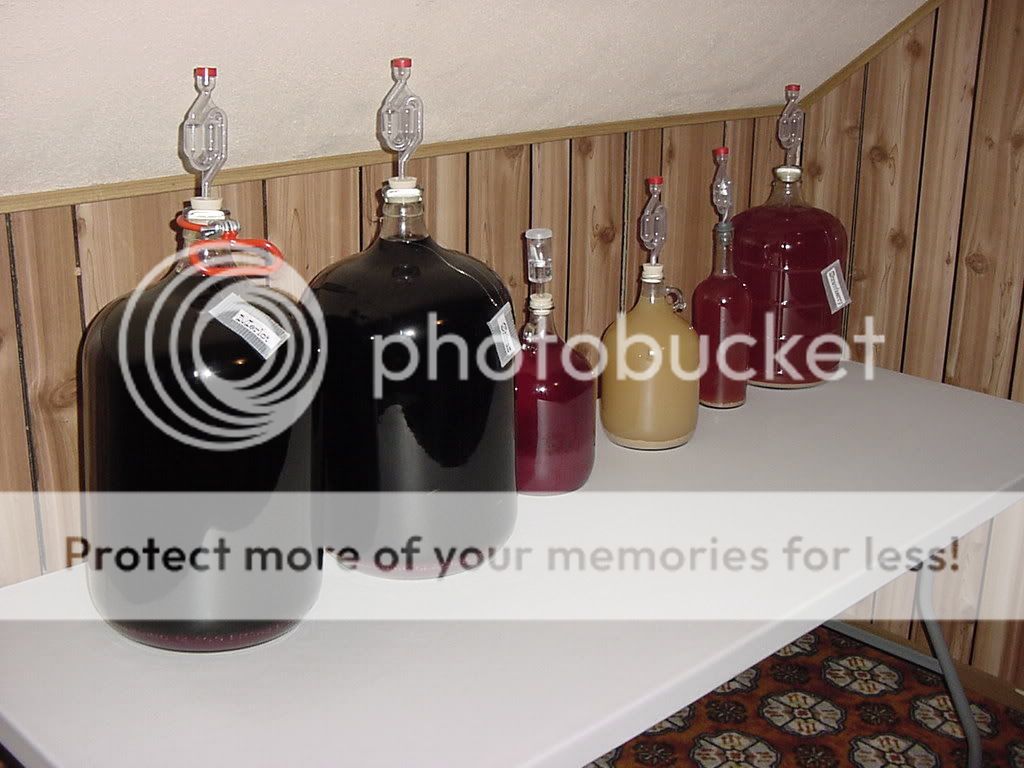No lard, but the cream is still all fat. The lard has been replaced by partially hydrogenated vegetable oil.
So, when will we hear about the results of this unholy experiment? I’ll pencil it in my calendar.
If by London Yeast he meant Wyeast 1968, it will probably be done fermenting by tomorrow.
I predict an oily mouthfeel, due to the fat and the flaked oats. I concur with the others who said you will have absolutely no head.
I do admire your creative spirit, but perhaps not all ideas should be given birth. (Mountain Dew mead, made by a friend of mine, fits this category as well.)
Of course he should have used Mello Yello.
If I ever start brewing again, I want to malt some quinoa and make an Inca Ale.
I’m leaving town tomorrow and it still has some good activity, so I won’t be placing it into the secondary for a week. I think I will taste it at that time to decide if I should add some more malt. It looks like I will lose about a gallon due to the layer of crud at the bottom. I expect that it will be at least a month before it is drinkable.
This just opens up a whole new categtory for me. Of course I don’t think high fructose cornsyrup is good enough for fermentables. Complex sugars are a must.
“Beer and Skittles.”
Homer? Is that you…?
That was my thinking the first time I made a batch of banana wine. It turned out exquisite though. Just started a six gallon batch, as my first one gallon batch went so fast.
Posting to get subscribed. I have high hopes for this dessert beer. (ok not really but I do wish it the best.)
Similar to the Gold Rush of 1848-55, only, they found candied-coated chocolate in them der hills. On the way there it started raining multi-hued drops, which they then tasted.
Okay, I’ll stop.
Ah yes, the M&M Frenzy of '94. I remember it well. M&M’s, one of the other of the Major Non-Kosher American Snacks (along with the Twinkie, which still doesn’t have a certification I’ll eat), went kosher when I was in seventh grade. All the Jewish schools I know of ran major sales of little sample packs for charity the first week they were available, and you had long lines of people desperate to buy a ‘fun size’ with five M&M’s in it for a dollar because they were something we’d all felt we were missing out on.
When Oreos became kosher, the general sense was that they really were better than the knock-off brands we’d been substituting for them until then.
Skittles still aren’t kosher, but their hard candies are, and they’re pretty good.
Did the M&Ms and Oreo manufacturers change something in the manufacturing/baking process to make them kosher, or did they just invite in some rabbis for a tour of the plant to assure them that everything was, er, kosher?
I’ll bet Oreos (at least) had to change their ingredients. According to Poundstone’s book Big Secrets, the “creme” filling in Twinkies originally could use whatever fat was available – including beef fat, lard, hydrogenated vegetable oil, or tropical oils. Oreo creme isn’t terifically different (again, according to Poundstone), having more sugar IIRC. I’ll bet they promised to only use vegetable oils that were approved by the rabbis. (It also would’ve removed a major “ick” factor. sugared vegetable oil filling is one thing, but sweetened lard is another.)
This is totally hijacking everything at this point, but Oreos really used to have lard in them, leading to obvious kashrut problems, and became kosher after changing the recipe to vegetable-derived partially hydrogenated fats. (I think they’ve gone with a ‘healthier’ fat more recently.) They may have changed for health or economic reasons, and then decided to get kosher certification afterwards, as I tend to doubt they’d change a time-honored recipe for what is after all a fairly small market. I believe that M&Ms might have once had cochineal (red bug shell extract) in the red ones, but I’m less sure of that.
I’m sure there are tons of foods out there that don’t have anything nonkosher in them, and are made on production lines that don’t also make nonkosher foods. I just won’t be sure of that unless it’s certified, and if something does become certified, I can’t know if it’s because it was one of those cases or because, say, they switched from using animal-fat derived glycerol to a vegetable-derived one. The ingredients list wouldn’t change (not that I decide whether to eat something based on the ingredients list), but it makes a big difference in terms of kashrut. For high-profile changeovers like Oreos, I’d probably know more about the specifics if they happened nowadays, with resources like kosherblog.net, the Chowhound kosher boards, and other online stuff.
Speak for yourself.
Praise the lard!
Banana wine, eh? I’d totally try that. Of course, I’d totally try just about any food someone recommends; it’s how I roll.
Long winters, eh?
You would be surprised. No strong fruit taste, a subtle hint of cinnamon, nutmeg, and ginger. Pale yellow color. Femented to dry. Mmmmmmm. Also, it is 12% ABV so there is some definite kick.
Here is a pic, it is the fourth from the left:

No kidding.
All this talk of fat in beer and “a firm, greasy head” reminded me of St. Louis’s Griesedieck Brothers beer. Yes, it’s pronounced “greasy dick.” I thought the brand was defunct, but I looked it up. http://www.gb-beer.com/index.shtml You can still find it in a long list of bars and restaurants on the website. Those who are leery of ordering a “Greasy dick” can say, “Gimme a Greasy.”
The current owners are direct descendants of the original Griesedieck brothers. Right after the end of Prohibition, Griesedieck cousins owned the breweries that made Falstaff and Stag beers.